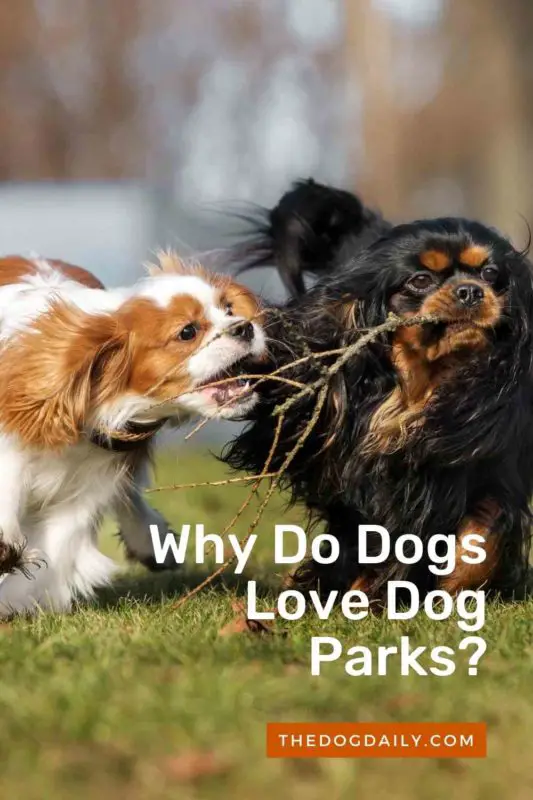Why Do Dogs Love Dog Parks?
Each day at 8 AM sharp, Benji, a two-year-old Pug, can hardly sit still. His eyes fixate on the corner of a building adjacent to his local dog park. Benji goes into a wild frenzy when he sees Jesse, a six-year-old Golden Retriever outside. The two friends are as close as brothers, and they look forward to their morning meetings at the dog park. It’s the highlight of their, and often their owners’ day.
If you have a local dog park, it is likely filled with dogs and people looking for kindred souls. Bark-parkers all over the world are discovering the simple pleasures of a community meeting place. Here are some tips for getting the most out of your visits.
Keep It Simple At the Dog Park
Your dog needs to play, and dog parks provide an enclosed and welcoming environment for it. Even if you only have a set time each day to spend with your pet, a simple romp off-leash at a dog park will help your dog relieve stress, especially if your dog leads a relatively quiet life. Socializing with other friendly canines allows dogs to enjoy each other while developing manners and respect. A quick 15-20 minute visit is better than no visit at all. It’s a chance for you to get some exercise and fresh air too.
Spay and Neuter Your Dog
Benji and Jesse have been neutered, which helps them to enjoy the park safely. Sheila McCullough, DVM, a veterinarian at the University of Illinois Veterinary Teaching Hospital in Urbana, says, “In addition to extending a dog’s health, neutering reduces male territorial instinct.” She reminds pet owners that a female dog in heat will inevitably cause confrontation between males who have not been fixed. Even the gentlest male dogs can be uncontrollable if not neutered when a female in heat is nearby.
Offer Suggestions To Improve Your Local Dog Park
Good parks plan for dogs as well as people. If your city cannot provide playground equipment, such as obstacle pits designed for dogs, consider getting together with other park visitors for a fundraiser to purchase such upgrades. Other improvements might include benches, water fountains, and shade-promoting landscaping that both dogs and owners might appreciate.
Avoid Risks At the Dog Park
Although dog parks often provide creature comforts, risks can loom within the gates. Public parks are open to all — so any canine can come in. Protect your pet from strangers, using a leash if necessary.
A significant concern for those who visit dog parks is the issue of infectious diseases. Before even thinking of visiting a dog park, make sure your dog’s vaccines are current. Avoid dogs that appear lethargic or ill. “Dogs that are very sick do not usually feel well enough to run and play at a dog park,” says Dr. McCullough, “so serious infectious illnesses may not be a major concern. Common sense should tell a dog owner to keep a dog at home if it isn’t well.”
Veterinary hospitals regularly treat injuries from dogfights that happen at dog parks. Make sure your dog is well trained and socialized. Keep your dog away from other dogs that lack such social skills. Accidents can also occur at dog parks, especially when an excited dog runs full-speed through unknown territories. Small dogs are at risk of being “run over” by larger dogs, and older dogs can over-exert themselves, causing injuries and illness.
Personal Story – Susan McCullough
I never saw them coming. I was chatting in a park with a friend while his two Boxers played with my Golden Retriever, Allie. The next minute, I felt myself being hit from behind by all three dogs, catapulting me backward and causing me to hit my head on the ground where I landed. Still, I felt alright. After a minute or two of lying on the ground and checking to make sure I hadn’t broken any bones, I stood up without assistance and drove Allie and myself home.
But six weeks later, I no longer felt OK.
A Dangerous Situation
I began to have excruciating headaches, and frighteningly, I started to lose the use of my right leg. I consulted my doctor, who ordered me to visit the emergency room of my local hospital. A CT scan revealed that I had two subdural hematomas — masses of blood on the surface of my brain that had developed after my tumble in the park — and required immediate surgery.
As my experience shows, romps in dog parks or other places where dogs congregate can be great fun, but they may also spell danger to dogs and their owners.
Preventing Injuries at the Dog Park
I asked dog trainer Robin Bennett, author of Off-Leash Dog Play (Dreamdog Productions) and a nationally known dog daycare expert, how people can keep themselves out of harm’s way in dog parks and other popular dog play areas. Here’s what she suggested:
Stay Aware at the Dog Park
“Owners should be aware of what’s going on when dogs are racing around,” says Bennett, who works from Woodbridge, Va. I messed up big-time here. My back was to the dogs while they were playing, so I didn’t see them running toward me. I later realized that I had inadvertently stepped out in front of Allie without giving her enough time to swerve and avoid me as the other two dogs followed close behind. The results were my collision with all three dogs, my backward swan dive to the ground, and the events that followed.
Maintain Loose Knees
“When the dogs are running around, keep your knees loose,” says Bennett. Loose knees lessen the likelihood that one or more dogs can knock you off your feet, whether from the front or behind. At the time, I was standing with my knees locked.
Move From the Dog Park Entrance
“Owners should not stand too close to the main gate of the dog park where all the action is happening,” says Bennett. “I recommend that dogs have a good recall command and that they are called to the owner when a lot is going on at the gate.”
Head Toward the Dog Park Perimeter
The middle of the park is also a popular place of activity, exactly where I was standing. To avoid being knocked over, owners should stand near the perimeter. However, they should not stand right against the fence enclosing the park. It’s essential to give your furry pal some space to come and lie down or sit behind you if it wants.
I unintentionally broke nearly all of Bennett’s rules the day I took my doggie-induced tumble. But I was lucky: My surgery was successful, and my recovery was steady. I’ve also started taking Allie back to the park, but I’m a lot more careful than I used to be.
No Park, No Problem
If your community does not have a dog park, consider forming a committee with other interested pet owners who may support the idea. Your first line of business should be the park’s desired location. Start with your local park and recreation board since many dog
parks lay within public parks’ jurisdiction. Failing that, consider private land, or land that may be available for lease or sale. Your dog park’s location will help determine its required annual budget, who will have access to the facility, and how it should be run.
Visit several dog parks to get ideas for design, features, and rules for usage. You will also need to plan for maintenance, such as trash removal, drainage, and grass mowing. Like any big project, you will need to write a business plan to cover the basics. Your time and effort will be worth it once the park opens. Just ask Benji and Jesse if they happen to come for a visit.
Article written by Author: Connie Jankowski, and Susan McCullough

